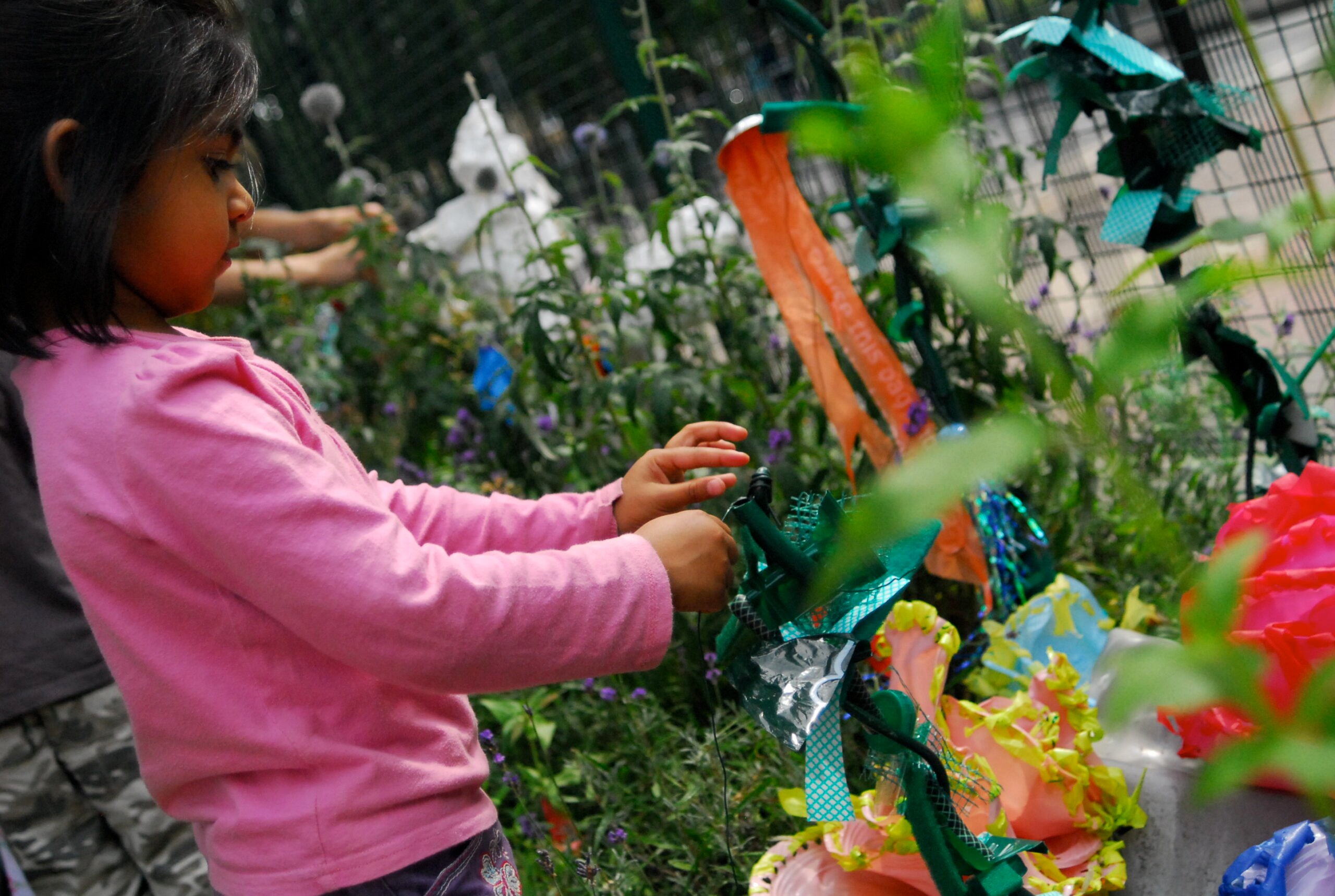
Photo: Bow Arts
Raising the game
Rob Smith has found a sustainable model for working with artist educators that provides artists with an income stream relevant to their field of work and doesn’t depend on public funding
Those of us working in arts education might recognise the picture: a small pool of reliable artist educators delivering 90 per cent of your projects. Without a proper infrastructure in the sector for education artists to enter the field it has largely been a case of luck, endless unpaid work, or on occasion, being thrown in front of a class of 30 children to sink or swim. As such it remains the privilege of the few. But actually, with a bit of support, and with an understanding of the breadth of opportunities the education sector really has to offer, emerging artists have much to give, and of course much to gain. The doors are starting to open…
as the value of the work is increasingly recognised, the schools’ level of support also increases
Bow Arts have been working to support artists and communities in East London for more than 15 years. One of our education aims is to change the culture of arts education – professionalise the sector. The model is simple: we provide affordable studios and live/work space to emerging artists. A proportion of the rent the artists pay is made as a charitable donation. Bow Arts claims Gift Aid on these donations and boosts them by 20 per cent. This generates more than £250,000 per year, which is then invested back into our education and gallery programmes alongside a financial commitment from the schools. The education programme relies on artists to deliver the work. The artists are paid, enabling them to support themselves in their own professional practice, which amongst other things includes being able to afford a studio space. The model is sustainable and not dependent on public funds.
Supporting the artists is key. We help them build a professional network with their peers and the wider sector. Our goal is to keep standards professional with consistently high quality projects that are well planned, managed and evaluated. This raises the game. And as the value of the work is increasingly recognised, the schools’ level of support also increases.
Support also comes from within the sector. Bow Arts have a banded education pay structure, meaning artists can join our education programme at any level. Those at the top of their game come in as lead artists with a clear expectation they will support those who are just starting out. We tailor support to each individual’s needs and carefully match-make lead artist, school, project and emerging artist. Some people discover it’s not for them – and it’s good that we helped them work that out. Others will discover their talent for the role and go on to become exceptional arts educators, moving up through our artist bands to regularly lead work as a key part of their professional portfolio.
So what do the opportunities look like for emerging artists? Firstly, it’s important to recognise that arts education isn’t just about standing in front of a class of 30 children. It can be a group of five students who come for a studio visit or artist talk, or an artist hosting a gallery visit. It can be the one-to-one coaching through a GCSE practical project or an intervention with a targeted group of learners. At other times it is the public art commission for the school grounds or the class project linked to a school topic. The point is that each of these requires a different weighting and balance of skills – a different set of interactions with children and teachers. There are ways in for emerging artists and one experience builds the confidence and skills for the next.
It is rewarding work. For starters, artists receive an income stream relevant to their field of work. Then there’s the impact it can have on the work artists are making. The fresh, honest and often insightful perspectives of young minds can unlock ideas. The playfulness, energy and hunger for learning and discovery can be a motivator too. Many of our artists comment on how their education practice enriches their own work. Alongside this, professional networks are being built and new collaborations are taking place, making everyone’s work stronger for it.
And of course the benefits go for schools and learners too. Students are getting access to new and exciting approaches to the arts. Teachers’ practice is challenged and develops, children’s skills and knowledge are nurtured, and remarkable artwork is created as a result. Partly it’s about risk. Good risk. But Bow Arts’ infrastructure ensures it is a supported risk. Our artists are making cutting edge, contemporary work with children and challenging the traditional order of things. Long may it continue.
Rob Smith is Head of Education & Learning at Bow Arts
Join the Discussion
You must be logged in to post a comment.